Guangcun Shan
Recognizing Handwritten Mathematical Expressions as LaTex Sequences Using a Multiscale Robust Neural Network
Feb 26, 2020Abstract:In this paper, a robust multiscale neural network is proposed to recognize handwritten mathematical expressions and output LaTeX sequences, which can effectively and correctly focus on where each step of output should be concerned and has a positive effect on analyzing the two-dimensional structure of handwritten mathematical expressions and identifying different mathematical symbols in a long expression. With the addition of visualization, the model's recognition process is shown in detail. In addition, our model achieved 49.459% and 46.062% ExpRate on the public CROHME 2014 and CROHME 2016 datasets. The present model results suggest that the state-of-the-art model has better robustness, fewer errors, and higher accuracy.
An Efficient Method of Detection and Recognition in Remote Sensing Image Based on multi-angle Region of Interests
Jul 22, 2019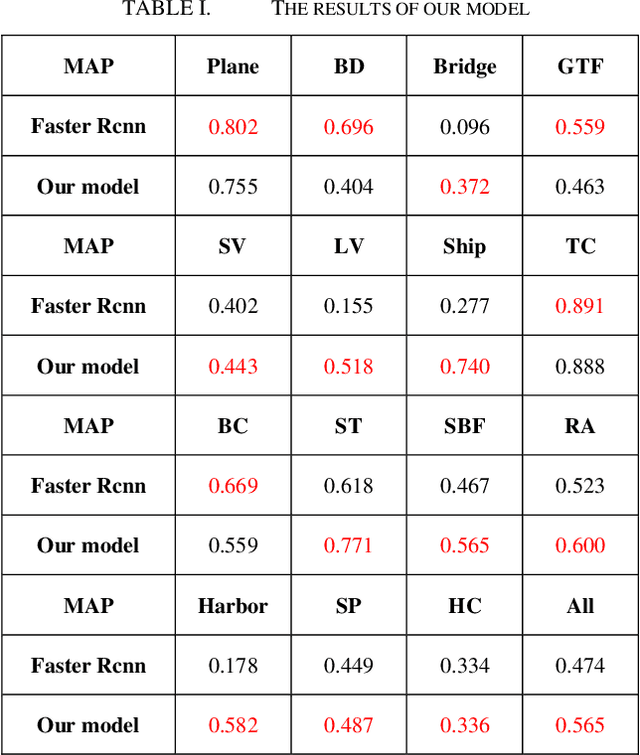
Abstract:Presently, deep learning technology has been widely used in the field of image recognition. However, it mainly aims at the recognition and detection of ordinary pictures and common scenes. As special images, remote sensing images have different shooting angles and shooting methods compared with ordinary ones, which makes remote sensing images play an irreplaceable role in some areas. In this paper, based on a deep convolution neural network for providing multi-level information of images and combines RPN (Region Proposal Network) for generating multi-angle ROIs (Region of Interest), a new model for object detection and recognition in remote sensing images is proposed. In the experiment, it achieves better results than traditional ways, which demonstrate that the model proposed here would have a huge potential application in remote sensing image recognition.
AED-Net: An Abnormal Event Detection Network
Mar 28, 2019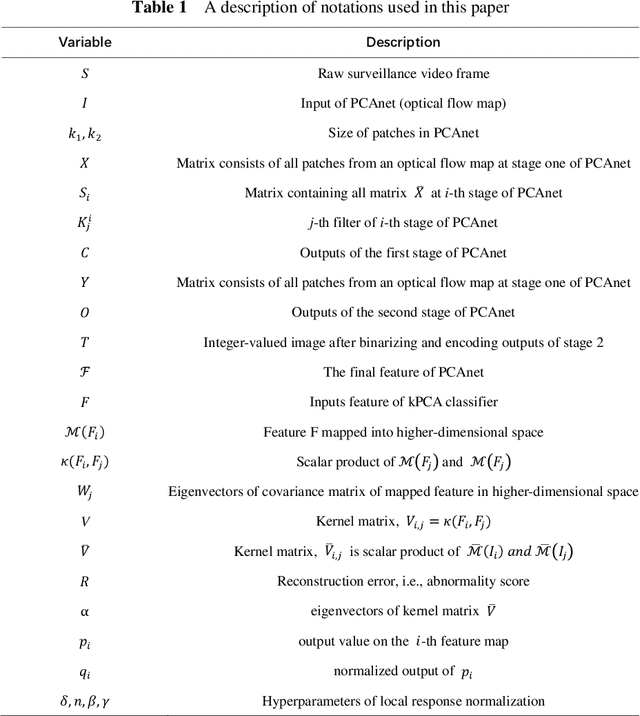
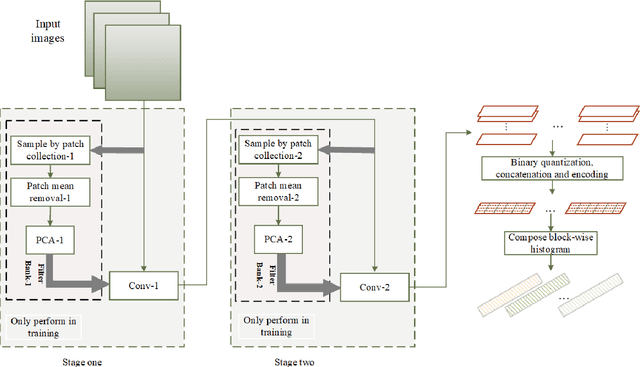


Abstract:It is challenging to detect the anomaly in crowded scenes for quite a long time. In this paper, a self-supervised framework, abnormal event detection network (AED-Net), which is composed of PCAnet and kernel principal component analysis (kPCA), is proposed to address this problem. Using surveillance video sequences of different scenes as raw data, PCAnet is trained to extract high-level semantics of crowd's situation. Next, kPCA,a one-class classifier, is trained to determine anomaly of the scene. In contrast to some prevailing deep learning methods,the framework is completely self-supervised because it utilizes only video sequences in a normal situation. Experiments of global and local abnormal event detection are carried out on UMN and UCSD datasets, and competitive results with higher EER and AUC compared to other state-of-the-art methods are observed. Furthermore, by adding local response normalization (LRN) layer, we propose an improvement to original AED-Net. And it is proved to perform better by promoting the framework's generalization capacity according to the experiments.
* 14 pages, 7 figures
Robust Encoder-Decoder Learning Framework towards Offline Handwritten Mathematical Expression Recognition Based on Multi-Scale Deep Neural Network
Feb 18, 2019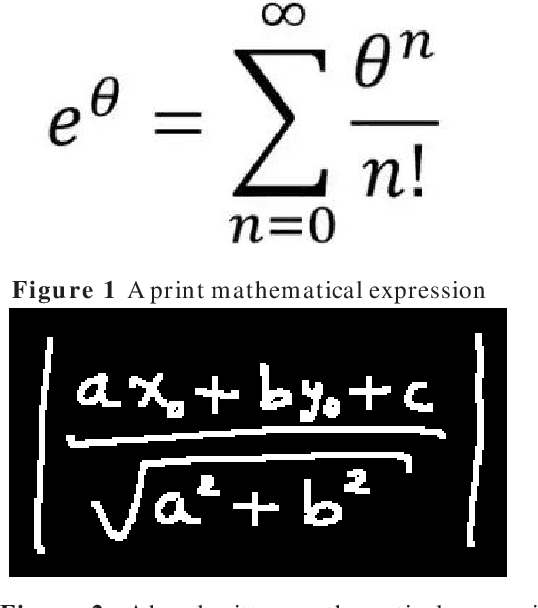


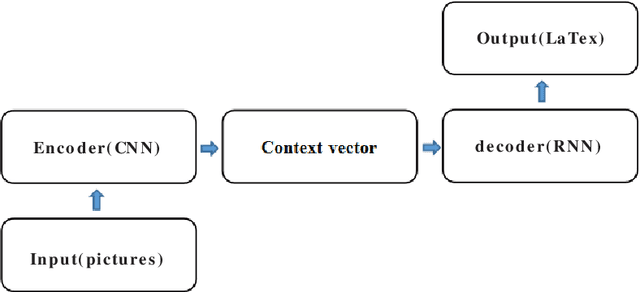
Abstract:Offline handwritten mathematical expression recognition is a challenging task, because handwritten mathematical expressions mainly have two problems in the process of recognition. On one hand, it is how to correctly recognize different mathematical symbols. On the other hand, it is how to correctly recognize the two-dimensional structure existing in mathematical expressions. Inspired by recent work in deep learning, a new neural network model that combines a Multi-Scale convolutional neural network (CNN) with an Attention recurrent neural network (RNN) is proposed to identify two-dimensional handwritten mathematical expressions as one-dimensional LaTeX sequences. As a result, the model proposed in the present work has achieved a WER error of 25.715% and ExpRate of 28.216%.
Region based Ensemble Learning Network for Fine-grained Classification
Feb 09, 2019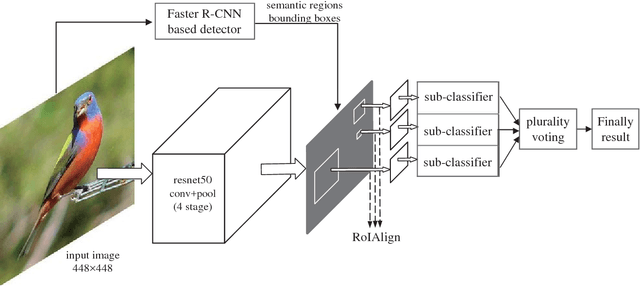
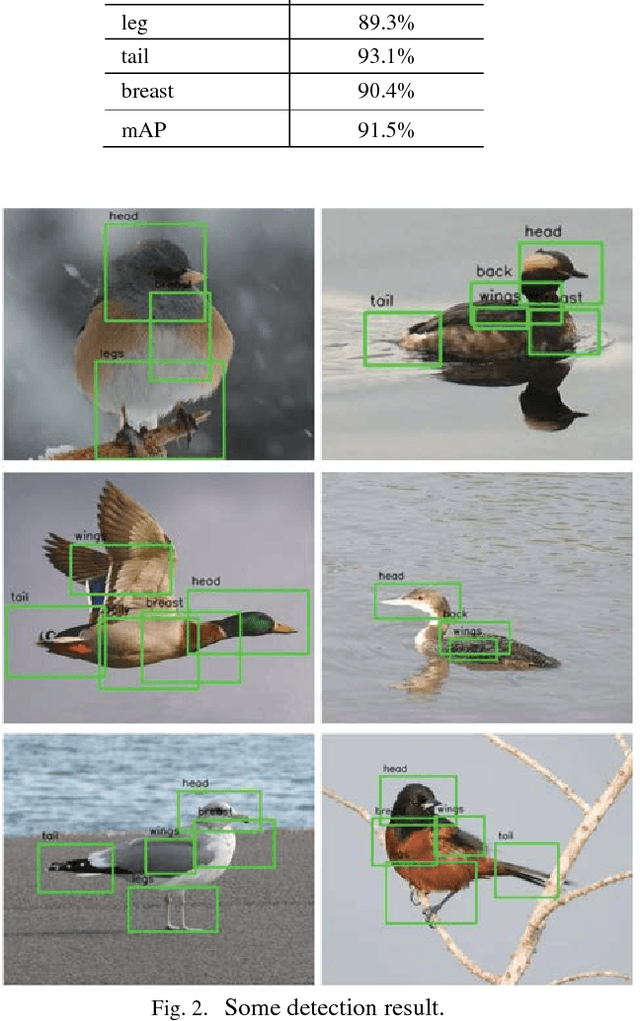
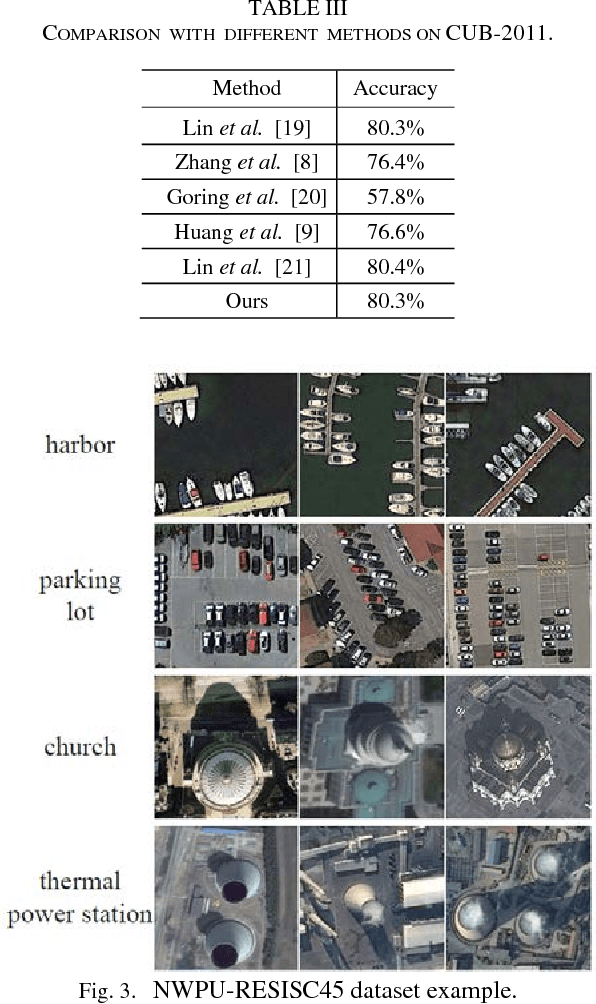
Abstract:As an important research topic in computer vision, fine-grained classification which aims to recognition subordinate-level categories has attracted significant attention. We propose a novel region based ensemble learning network for fine-grained classification. Our approach contains a detection module and a module for classification. The detection module is based on the faster R-CNN framework to locate the semantic regions of the object. The classification module using an ensemble learning method, which trains a set of sub-classifiers for different semantic regions and combines them together to get a stronger classifier. In the evaluation, we implement experiments on the CUB-2011 dataset and the result of experiments proves our method s efficient for fine-grained classification. We also extend our approach to remote scene recognition and evaluate it on the NWPU-RESISC45 dataset.
HE-SLAM: a Stereo SLAM System Based on Histogram Equalization and ORB Features
Feb 09, 2019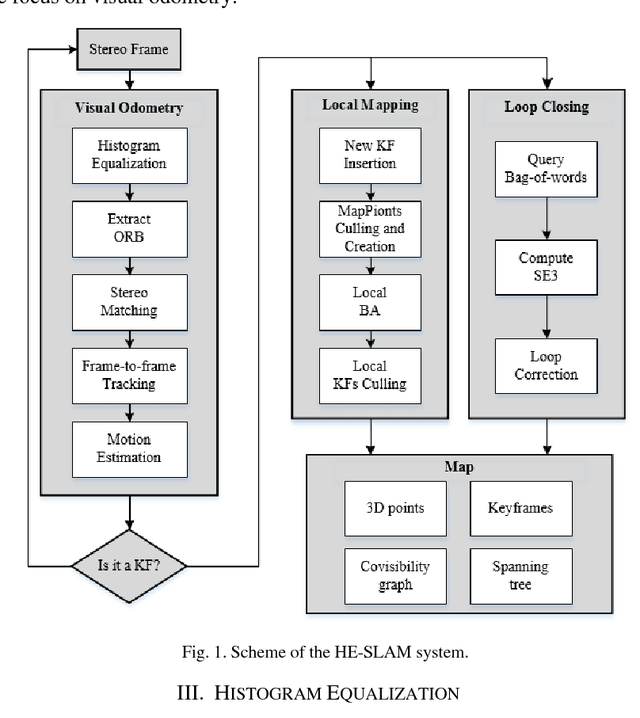
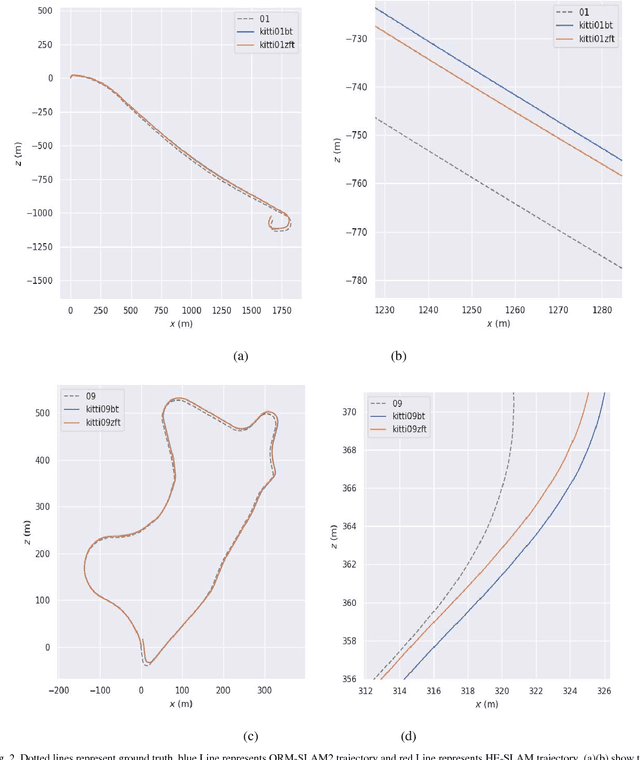
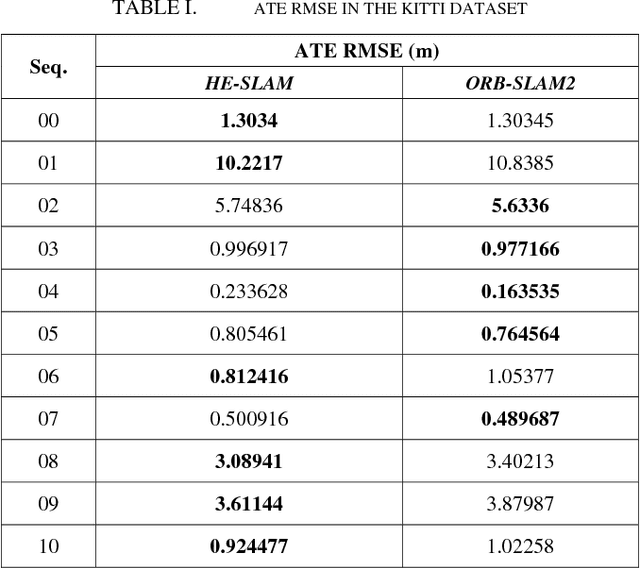
Abstract:In the real-life environments, due to the sudden appearance of windows, lights, and objects blocking the light source, the visual SLAM system can easily capture the low-contrast images caused by over-exposure or over-darkness. At this time, the direct method of estimating camera motion based on pixel luminance information is infeasible, and it is often difficult to find enough valid feature points without image processing. This paper proposed HE-SLAM, a new method combining histogram equalization and ORB feature extraction, which can be robust in more scenes, especially in stages with low-contrast images. Because HE-SLAM uses histogram equalization to improve the contrast of images, it can extract enough valid feature points in low-contrast images for subsequent feature matching, keyframe selection, bundle adjustment, and loop closure detection. The proposed HE-SLAM has been tested on the popular datasets (such as KITTI and EuRoc), and the real-time performance and robustness of the system are demonstrated by comparing system runtime and the mean square root error (RMSE) of absolute trajectory error (ATE) with state-of-the-art methods like ORB-SLAM2.
 Add to Chrome
Add to Chrome Add to Firefox
Add to Firefox Add to Edge
Add to Edge